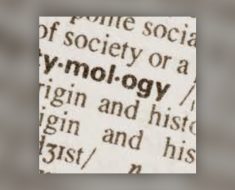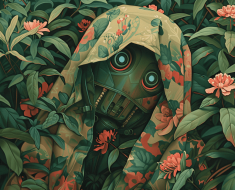Ever scratched your head at the sight of a new emoji on your screen? Well, you’re not alone.
A recent survey by online language-learning marketplace, Preply, found that 81% of us have struggled to figure out what someone’s trying to say with one of those cute little pictures — and almost half of us have had uncomfortable situations arise from a misinterpreted emoji. With the grand unveiling of the 2024 collection, it seems we’ve hit a whole new level of, “wait, what does that one mean?”
Though they’re meant to be easy and fun, adding a touch of personality to our daily communications, the language of emojis can be just as complex — if not more so — than words.
New Releases
The newest emojis to leave us bewildered in 2024 are the horizontal head shake, vertical head shake, and phoenix. The phoenix, a bird engulfed in flames, has flummoxed users the most, with 64% admitting they weren’t sure what it was or what it means.
While some have correctly interpreted this mythical bird as it is, others have creatively repurposed it to symbolize other concepts, such as passion, fierce determination, or a cycle of rebirth. Among the quirkier interpretations, some thought of it as a flaming Pegasus, while others suggested it should be the new icon for Elon Musk’s X, the platform previously known as Twitter.
This year’s emoji rollout was certainly diverse, featuring everything from pretty straightforward images, like a lime and mushroom, to more unique ones, like a broken chain. There were also some variations of tried-and-true emojis: alternate family setups containing three or four members, and a person walking and running while facing right.
The Most Confusing Emojis
Just because an emoji has been around for a while doesn’t mean users totally “get” it. The emojis that confuse us most are nail polish 


Primarily used by 40% of users to depict an aura of class or bougie charm, the nail polish emoji has gotten diverse interpretations ranging from the mundane “just nail polish,” to the mischievous “don’t mind me hehe,” to referring to moments of “self-care.”
Preply also dug into another trend — people who use emojis differently than their intended meaning. For example, only 5% of people who use the persevering face emoji use it as intended. For the 95% majority, it’s the face of frustration. The next most misused emojis are the fearful face and the always-enigmatic nail polish, indicating that these pictures can mean more than meets the eye.
Regional Trends
We might think emojis represent a kind of universal language, but it turns out they can get lost in translation, too. Surprisingly, the way we use — and interpret — emojis may differ depending on where we are or where we’re from.
Different regions of the U.S. find some emojis and their uses more confusing than others. For example, the nail polish emoji leaves users in the West, South, or Midwest perplexed, while the “dashing away” emoji puzzles Americans all along the Midwest, Northeast, and South. The enigmatic upside-down face seems most confusing for folks in the South.
The potential for confusion multiplies when you take things global. The “thumbs up” emoji, for example, is quite a controversial character when you look at it cross-culturally. While viewed as an upbeat symbol of affirmation, agreement, or excellence in the West, it’s considered offensive in some Middle Eastern cultures, bearing similarity to a gesture as insulting as showing the middle finger in the United States.
The “OK” sign faces similar issues. While it indicates “OK” or “perfect” in the Western world, it’s deemed a rude gesture in Brazil and parts of Southern Europe. For Australian aboriginal people, it’s a sign of evil. Meanwhile, in Japan, it’s associated with money, while in certain Middle Eastern countries, it signifies the evil eye.
Finally, the “Victory” sign, which most Americans think of as the peace symbol, can become just as foul as flipping someone off in Australia and Britain if you switch up which direction the palm is facing.
Some Final Thoughts
Ultimately, emojis are all in good fun! These cute little pictures add flair and personality to our messages, and you don’t have to use them strictly by the book. Just make sure the person you’re talking to understands how you’re using them — or be prepared for some potentially awkward situations.
Read next: PwC Report: AI-Performable Jobs Decline, Demand Rises for Jobs Requiring Advanced Skills









